The sound of a helicopter echoed Friday afternoon over Mozingo Outdoor Education Recreation Area (MOERA) while a rotation of ambulances with lights flashing moved to and from the site where a simulated natural disaster had left dozens of victims injured and confused.
The scene played multiple times throughout the weekend, with a cadre of first responders and emergency management personnel tending to the victims, as Northwest Missouri State University hosted its annual Missouri Hope emergency response field training exercise.
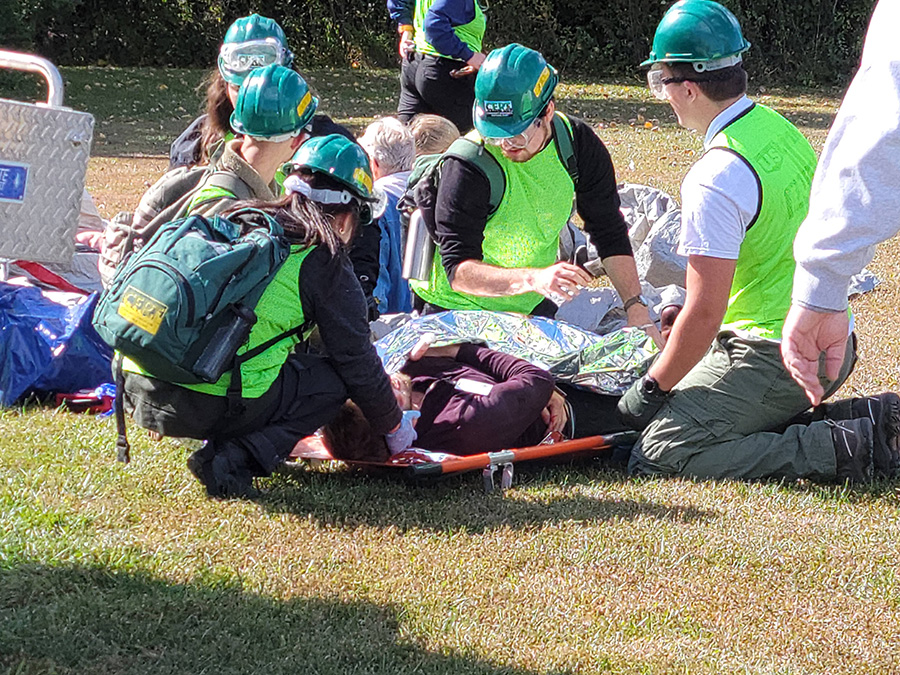
Students working as first responders assist volunteers portraying victims of a natural disaster during Missouri Hope. (Northwest Missouri State University photos)
While the disaster simulation teaches participants about task-related skills – such as search and rescue, first aid and incident command systems – they also build process skills related to leadership, active followership and building highly effective teams.
“Because you’re in a team and you rotate the leadership positions in a really high stress environment, many students have said this has been a life changing event because the technical skills are nice, but people – especially who didn’t think they could lead – suddenly find that they are empowered for the rest of their life,” said Dr. Mark Corson, a professor of geography and U.S. Army veteran who helps coordinate the exercise.
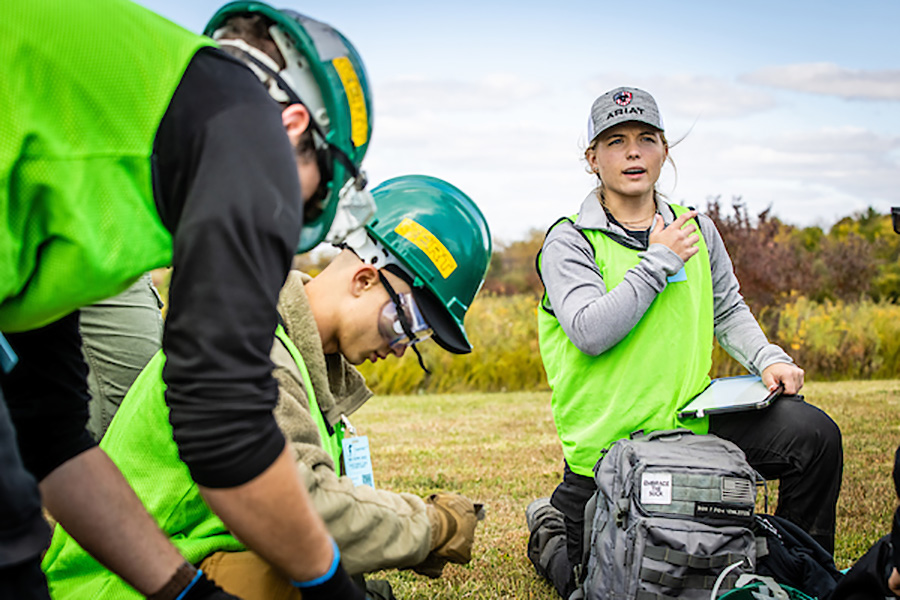
Sydney McQuinn, a nursing student at the University of Missouri-Kansas City, directs a team of first responders during an simulated disaster Friday at Missouri Hope.
During Friday afternoon’s rotation, Sydney McQuinn, a nursing student at the University of Missouri-Kansas City, was the command officer charged with overseeing the response and rescue of victims at the fictitious Redden Village. There, first responders found victims trapped inside damaged structures and overturned busses and lying injured among piles of concrete. Victims suffered from lacerations and impalements, among other injuries.
“The priority was really finding out who was able to save, who was too late, and what we can do until transport gets here, especially when there’s not a whole lot of resources,” McQuinn said as she caught her breath after a round of the simulation finished. McQuinn, who aspires to work in the trauma field, said the role was a good learning experience for her. “It was hard for me not to be hands-on because I wanted to, but mine was making sure that there was organization and I was always available for help, if we needed resources.”
She added, “I had no idea what I was coming into. At first it was like, I don’t know what to expect, but within the first half day I’m being challenged already. It’s not like school where they show you and then they hold your hand and do it. It’s more of like, we’re just gonna force you out there and then we’ll help you along the way. I think that’s what we really need.”
Elsewhere, at MOERA’s ropes challenge course, Chris Meizanis, a Northwest junior emergency and disaster major from Flemington, New Jersey, worked with a group of students practicing a high-angle rescue. Meizanis, who is working toward a career in emergency management planning, participated in Missouri Hope for the first time this fall.
“You will not get an experience like this really anywhere, and that’s the main reason why I came out here, for hands-on experiences like this,” he said.
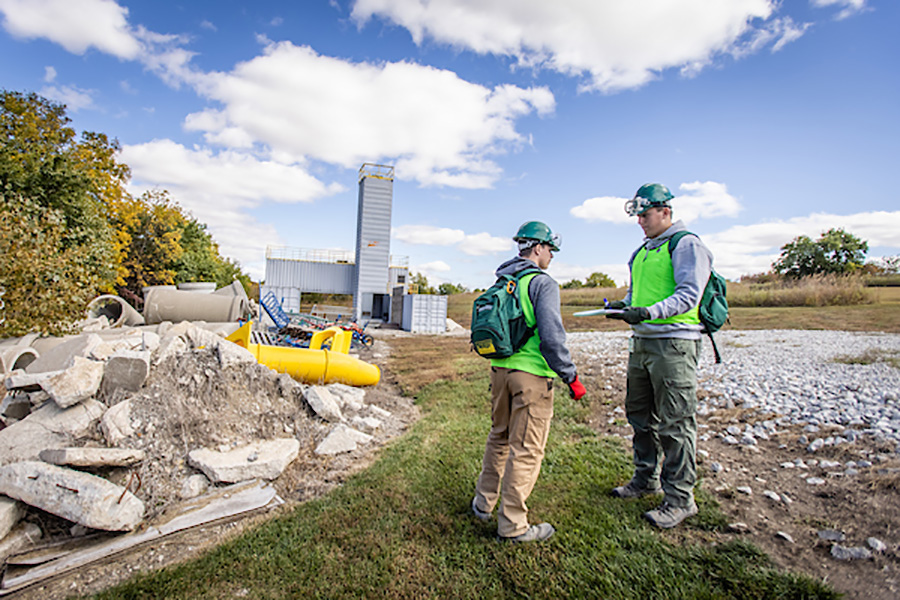
First responders assess the environment during a Friday simulation of a natural disaster.
Since its first year in 2013, Missouri Hope has evolved and expanded into a three-day multidisciplinary mass casualty training experience that is required for Northwest students studying majors or minors in emergency disaster management (EDM).
The event includes a rotation of distinct training exercises for students as well as emergency personnel in medical, police, fire and armed forces. Scenarios include search-and-rescue, assessment of traumatic injuries and evacuation from difficult terrains, such as cliffs and rivers. The Medical Reserve Corps of Greater Kansas City also joined the exercise this year and led a nighttime search and rescue simulation with dogs.
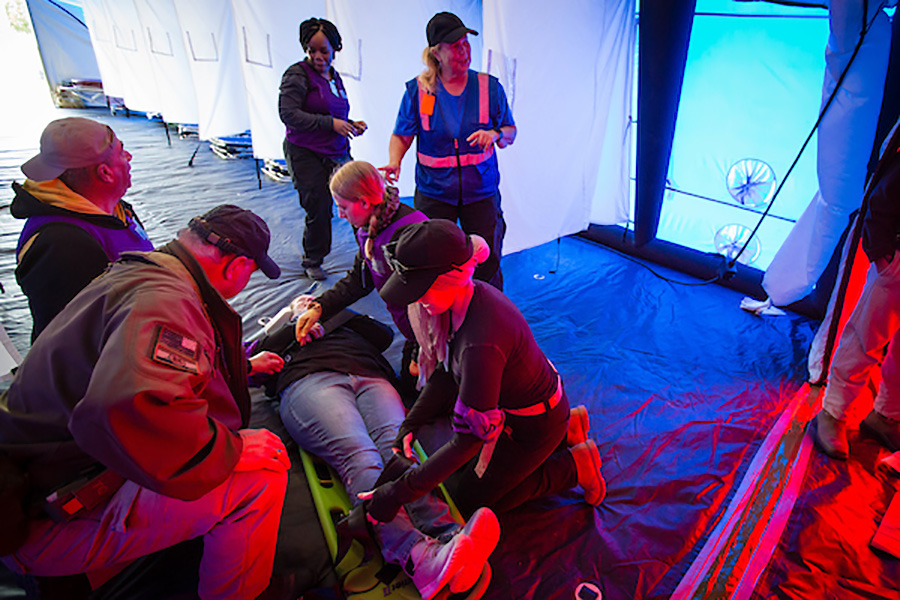
Medical personnel practice tending to a victim of a natural disaster inside a hospital tent at Missouri Hope.
While around 60 students participated in the exercise, another 60 volunteers worked throughout the weekend as staff members. Additionally, 185 volunteers of all ages played the roles of victims and brought a sense of reality to the training. The role players were made-up to resemble victims with an assortment of physical injuries typically sustained during floods and tornados.
Additionally, Northwest alumni working in the emergency and disaster field annually return to Maryville to assist with Missouri Hope. The alumni assisting this fall included Morgan Hunter, who earned his bachelor’s degree in emergency and disaster management and now works as an emergency management planner for Johnson County, Kansas, Emergency Management. Hunter participated in Missouri Hope three times as an undergraduate student and returned for the second time as an alumnus.
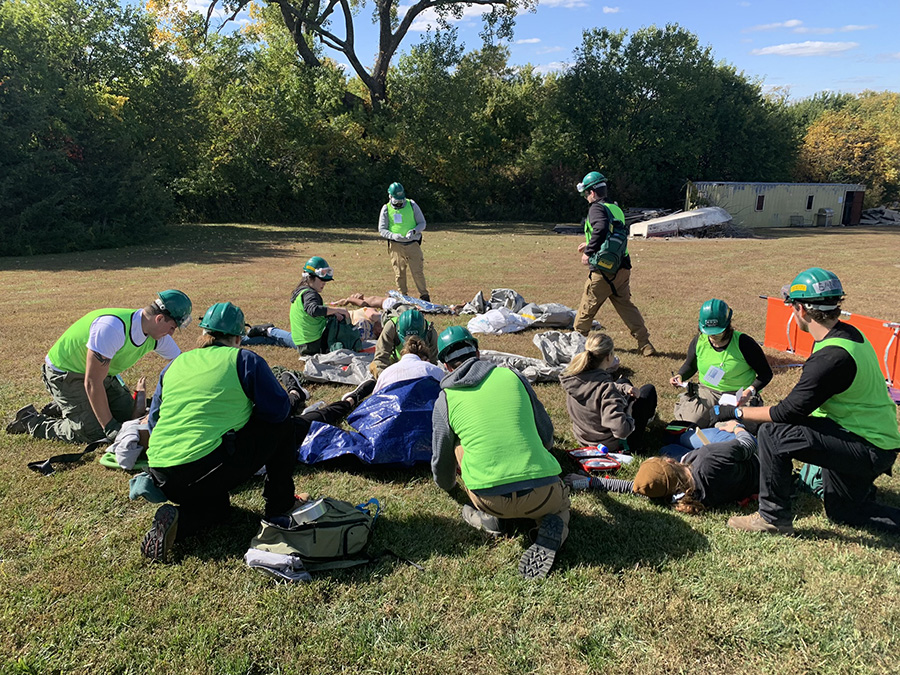
A team of first responders help victims of a simulated natural disaster during Missouri Hope.
“Missouri Hope is a great example of what happens when people want to dedicate their time and experience,” Hunter said. “The things that I see people learn when I am here are astounding. A student will go through some of the courses, and maybe it’s not quite clicking. But then they come to Missouri Hope, and it’s like a flip gets switched.”
Missouri Hope is sponsored each fall by Northwest’s Consortium for Humanitarian Service and Education, a non-profit organization that coordinates full immersion experiences for individuals in the fields of disaster response and humanitarian relief. Partner agencies include Maryville Public Safety, Nodaway and Buchanan County Emergency Management, Nodaway County Ambulance District, LifeFlight and LifeNet Air Ambulances, SEMA Region H Marine Hazmat Team, the 129th Field Artillery Battalion Missouri Army National Guard and the 139th Airlift Wing of the Missouri National Guard. The exercise also attracts students from colleges and universities throughout the country, including students this year from the University of Albany in New York and Atlanta.
MOERA is a 320-acre parcel of land at Mozingo Lake Recreation Park, located east of Maryville on Highway 46. MOERA is operated by Northwest’s School of Health Science and Wellness and provides a variety of outdoor education and recreation opportunities, including a challenge course, trap shooting and archery, canoes and kayaks, and outdoor research areas.